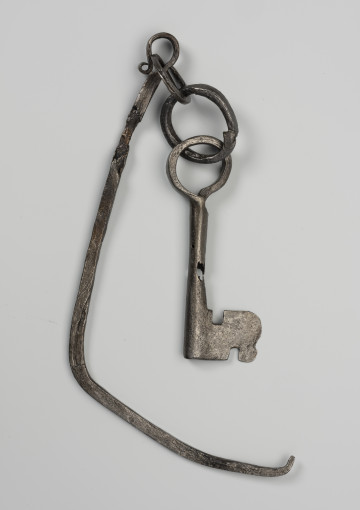
Long comb
1176 — 1225
National Museum in Szczecin
Part of the collection: Middle Ages
Thousands of artefacts were recovered during the archaeological excavations carried out between 1986 and 2001 within the boundaries of Szczecin's Podzamcze. The largest number was provided by dig VI established within quarter 5. One of them is a wooden wedge discovered in 1992, in a facility identified as a tar mill. As the name suggests, the piece is in the form of a wedge, a prism with a cross-section similar to an elongated right triangle. It was made using a chipping technique, which was often used to pre-treat the wood in order to make dranice [wooden roofing material] or slats. Other wedges, carpentry batons and saws were used for this. The material used was oak wood from the outer part of the trunk, as evidenced by the presence of a layer of sapwood. The surface of the presented piece was left untreated. The defects in the blade section of the wedge and the slight thickening of the hilt section caused by blows, probably carpenters' batons, are evidence of use. Relics of this type are found in relatively large numbers on settlement sites with an urban character, but are rarely more widely presented, probably because of its little visual appeal. However, it seems appropriate to make an exception to this rule because of the important role they played in the medieval economy. This is because, on a par with carpentry batons, wedges were one of the basic tools used during woodworking and construction of various structures. Sławomir Słowiński
Author / creator
Object type
wedge
Technique
ripping, sawing
Material
oak wood
Origin / acquisition method
legal transfer
Creation time / dating
Creation / finding place
Owner
Muzeum Narodowe w Szczecinie
Identification number
Location / status

1176 — 1225
National Museum in Szczecin

901 — 1200
National Museum in Szczecin

1176 — 1200
National Museum in Szczecin
DISCOVER this TOPIC
Museum of King Jan III's Palace at Wilanów
DISCOVER this PATH
Educational path